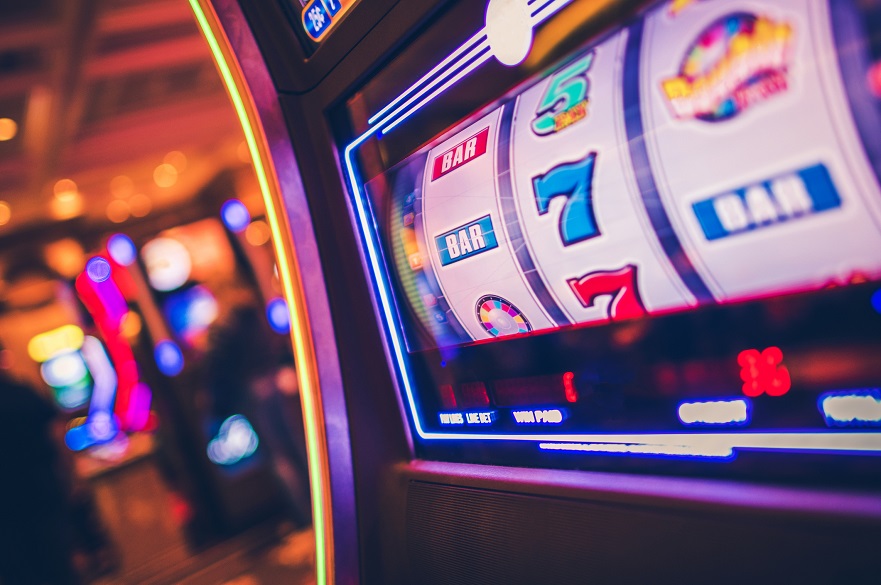When it comes to playing slot games, several factors can significantly impact your overall experience. The theme of the slot, its Return to Player (RTP) rate, bonus features, and even the jackpot size all play a role in determining how much fun you have and how profitable your sessions can be. Yet, one of the most important elements beginners often overlook is slot volatility.
If you’ve spent time around slot games, whether online or in a land-based casino, you’ve probably heard terms like “high volatility” or “low volatility” used often. But what exactly do they mean? This article breaks down volatility in slot games, why it is important for your game choice, and how it influences your gameplay and winning.
What is Slot Volatility?
Some slot games give you small, frequent wins that keep the action steady. Others make you wait longer but reward you with big payouts when they finally hit. The difference between these two opinions comes down to volatility.
In simple terms, slot volatility, also known as variance, refers to how risky a slot game is and how often it pays out. It’s a measure of the balance between the frequency and size of wins. It tells you what kind of experience to expect, whether it’s frequent small wins that come regularly, or rare but potentially huge payouts that appear after longer dry spells.
Players often confuse volatility with RTP (Return to Player), but they’re not the same. RTP represents the long-term average payout percentage of a slot. For instance, a 96% RTP means the slot returns an average of $96 for every $100 wagered over time. Volatility, on the other hand, determines how those payouts are spread out.
When you understand what volatility means in slots, it helps you manage your expectations and choose a game that fits your playing style. If you enjoy steady, low-risk gameplay, go for a low-volatility slot. But if you prefer the thrill of larger rewards, high-volatility slots might be your best bet.
Slot Volatility Types
Generally, slot games fall into three main categories of volatility: low, medium, and high. Each type offers a different balance of risk and reward.
High Volatility Slots
High-volatility slots offer the biggest possible wins, but they don’t occur frequently. You might spin several times without landing a significant payout, but when a win does come, it’s usually much larger than what you’d find in low or medium-volatility games. In other words, they offer a high-risk, high-reward experience. A notable example of a high-volatility slot is Dead or Alive. Progressive jackpot slots also fall into this category.
Medium Volatility Slots
Medium volatility slots strike a perfect balance between frequent small wins and the potential for bigger payouts. They are neither too risky nor too predictable. In these games, you can expect moderate wins at a steady pace. You won’t go too long without hitting something, but the prizes won’t be as massive as those of high volatility games. Due to this balance, medium volatility slots are often regarded as the most versatile option. Popular examples include Gonzo’s Quest, Monopoly Big Baller India, and Thunderstruck II.
Low Volatility Slots
Low volatility slots deliver the exact opposite experience of what you get from high volatility slots. The games pay out small amounts, but they do regularly. You won’t find massive jackpots here, but you’ll enjoy a lot of action and engagement along the way. Classic games like Starburst are excellent examples of low-volatility slots.
How Slot Machine Volatility Affects Your Gameplay
As mentioned, slot volatility influences your overall gaming experience, influencing not just how often you win but how much you can win. Let’s see how this plays into your strategy, emotions, and game choice.
High Volatility Slots
A high-volatility slot is the best choice for players who love risk and thrills. They’re perfect if you have a large bankroll, more patience, and you don’t mind enduring dry spells in pursuit of a potentially massive jackpot. On the other hand, if you are a beginner or casual player with a limited bankroll, you might find them frustrating.
Low Volatility Slots
Low-volatility slots are great for players who like steady gameplay and regular, smaller wins. These games help you extend your bankroll and have longer gaming sessions without taking big risks. They suit beginners or casual players who simply want to play for fun. Although the payouts aren’t huge, the steady wins keep the action going and make the experience enjoyable.
Medium Volatility Slots
Medium volatility slots are one of the most popular choices among players. These games are great if you enjoy a bit of risk but still want to see wins often enough to keep things exciting. You won’t experience long losing streaks like in high volatility slots, but you’ll still have the thrill of chasing a larger prize every now and then.
Conclusion
Volatility plays a huge role in shaping your overall slot gaming experience. Understanding how it works helps you make smarter choices, depending on your budget, risk appetite, and mood. So next time you play, don’t just pick a game. Check its volatility and other important features first.

